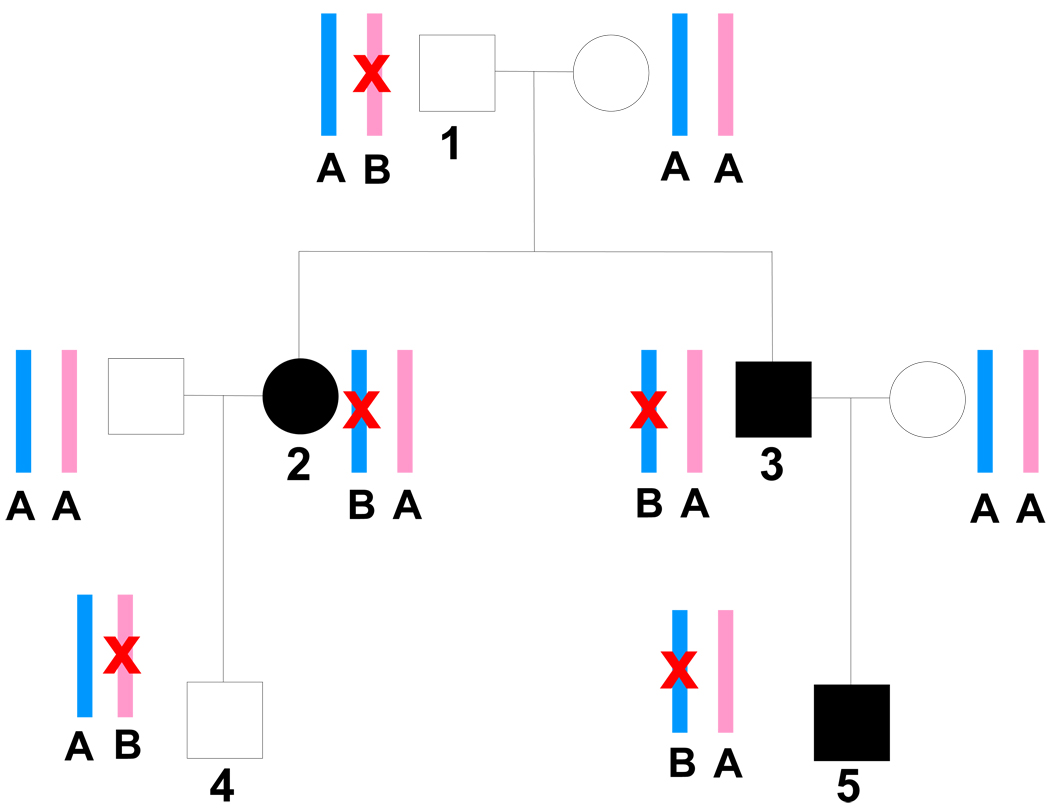Figure 2.
Pedigree depicting a maternally-imprinted, paternally-expressed type 2 diabetes gene. Affected individuals are represented by solid squares and circles. Maternally-inherited alleles are shown in pink, paternally-inherited alleles in blue. The A allele represents a normal functioning copy of the gene and the B allele represents a mutant copy of the gene (also indicated by red “X”). Offspring are affected with type 2 diabetes when the mutant allele B is inherited from the father because the normal maternal copy is also nonfunctional due to silencing by imprinting. If mutant allele B is inherited from the mother, the offspring will be unaffected because the paternal (expressed) copy is normal. Note that for simplification, the mutation shown here is assumed to be fully penetrant and the sole possible cause of the disease, which are not typical assumptions for type 2 diabetes susceptibility genes. Note that individuals 1–5 all have a copy of the mutant allele B. Individuals 2, 3, and 5 received allele B from their father and are therefore affected. In contrast, individuals 1 and 4 received allele B from their mother and are unaffected.

